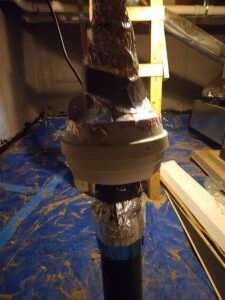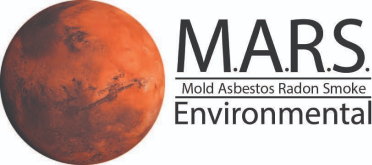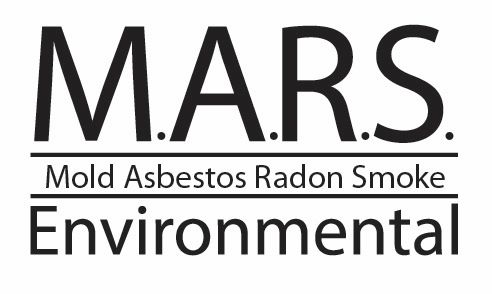Home is where you spend the most time and should be your safest space, but if your indoor air contains radon, your family’s health is at serious risk.
In this article, Jeanine Humphrey, indoor air quality expert and owner of M.A.R.S. Environmental in Colorado, shares what radon is, why it’s dangerous, and why only certified professionals should handle remediation.
What Is Radon, and Why Is It Dangerous?
Radon is a radioactive gas released from decaying Uranium in the soil. It’s a Class A Carcinogen that damages lung tissue and causes mutations in DNA, significantly raising the risk of lung cancer. It’s the leading cause of lung cancer for non-smokers, causing around 21,000 deaths in the U.S. every year.
Nationwide, 1 in 15 homes has elevated radon levels. In Colorado, it’s even higher, closer to 1 in 2 homes. Even in lower-risk states, radon levels can fluctuate to unsafe levels.

How Do I Know if Radon Levels Are High in My Home?
Radon is colorless, odorless, and tasteless. The only way to know is to test.
Does Radon Poisoning Have Symptoms?
No. That’s what’s so scary about radon poisoning: there are no visible symptoms. Many people assume they would know if radon levels are high in their home (like they would with other toxic gases like carbon monoxide), but there are no symptoms of radon exposure. It does not cause any short-term health effects, like headaches or coughing.
Many Americans live with high levels of radon and have no idea until they are diagnosed with lung cancer after years of exposure.
Is Radon Testing Expensive?
Not at all. Short-term radon tests cost about $15 through the National Radon Program Services, though the accuracy of these tests can vary. Professional radon testing, which is the most accurate and reliable testing, is around $99. At M.A.R.S. Environmental, we use Continuous Radon Monitoring, which provides immediate, accurate results after 48 hours of closed conditions.
How Does a Radon Mitigation System Work?
If your home tests high, don’t panic. Professional systems reduce levels by up to 99%, making long-term health risks unlikely. A radon mitigation contractor will:
- Install piping beneath the home to create negative pressure
- Route it through the rim joist to an exterior fan
- Vent radon above the roofline
Note: If a sump pump is present, the system can draw gas directly from the pit.
Other mitigation methods include:
- Passive Radon Mitigation Systems: Use natural air currents and depressurization. Cheap to install in new builds, but are less effective for reducing high levels. They can be activated with a radon fan for greater effectiveness.
- HRV Radon Mitigation Systems: Dilute radon by continuously bringing in fresh outdoor air to replace indoor air. These also reduce other indoor air pollutants.
- Vapor Barriers: Forms a physical barrier between the soil and home’s interior to prevent radon from entering the home. They also keep out other harmful gases and moisture.
Methods are often combined for maximum effectiveness.
How Much Does Professional Radon Mitigation Cost?
Cost depends on:
- System type
- Home size and layout
- Crawl space square footage
- Vapor barrier needs
Compared to cancer treatment or losing a loved one, professional remediation is a cost-effective investment for healthy air and peace of mind.
If cost is a concern, ask your local remediation company if they offer financing. Some federal organizations and state-level governmental programs offer assistance for radon reduction in limited income housing.
Can I Save Money With DIY or Cheaper Radon Mitigation?
Doing radon mitigation yourself or hiring someone who isn’t qualified is unsafe, and in some states, like Colorado, there are laws requiring anyone claiming to be a “radon measurement professional” or “radon mitigation professional” to be licensed and certified.
Risks of unlicensed mitigation include:
- Ineffective remediation that doesn’t reduce radon in your home to safe levels
- Improper venting
- Building code violations
- Electrical complications (Wiring the fan without proper knowledge can be dangerous and risk electrical fire)
- Water leaks/roof damage

What are some red flags that radon remediation wasn’t done correctly?
Red flags to watch out for include:
- Fan installed indoors
- Vent outlet under a window or too close to entry points (4ft above or 10 ft away)
- No post-mitigation testing
- No manometer installed
- Poorly sealed entry points
Why Is Professional Radon Remediation Essential?
Unqualified work leaves your family at risk, especially those who spend the most time in the basement or lower levels where radon accumulates.
A certified professional will:
- Use accurate testing methods
- Guarantee safe post-remediation radon levels
- Verify results with follow-up testing
- Carry training, certification, and insurance


